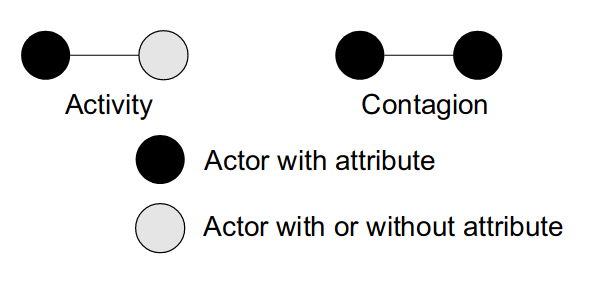New topics in network modeling
1st Chilean Summer School about Social Network Research
The University of Utah
Booz Allen Hamilton
2024-01-12
Overview
With more data and computing resources, the things that we can ask and do with networks are becoming increasingly (even more) exciting and complex.
In this section, I will introduce some of the latest advancements and forthcoming topics in network modeling.
Part I: New models and extensions
Mutli-ERGMs
In Krivitsky, Coletti, and Hens (2023a), the authors present a start-to-finish pooled ERGM example featuring heterogeneous data sources.
They increase power and allow exploring heterogeneous effects across types/classes of networks.

Statistical power of SOAM
- SOAM Stadtfeld et al. (2020) proposes ways to perform power analysis for Siena models. At the center of their six-step approach is simulation.
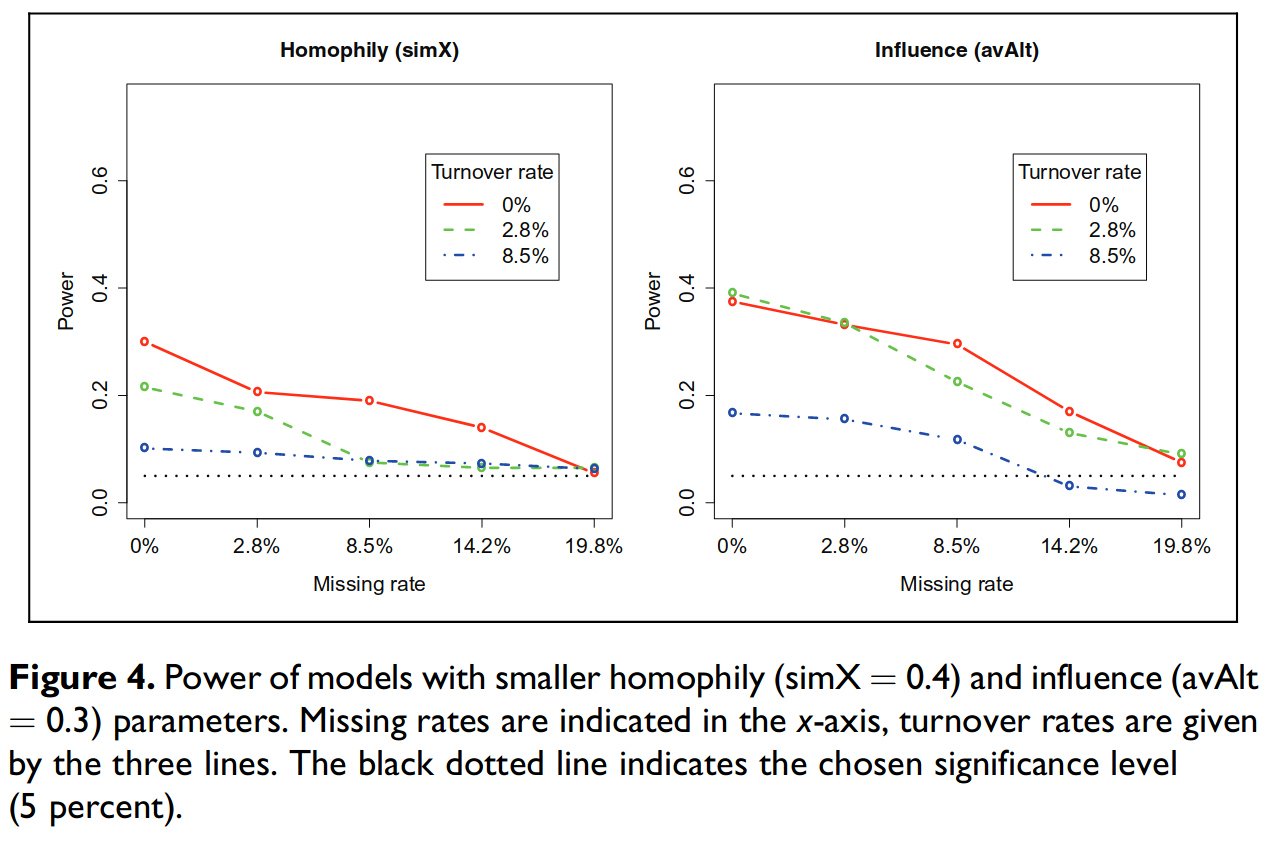
Bayesian ALAAM
Ever wondered how to model influence exclusively?
- The Auto-Logistic Actor Attribute Model [ALAAM] is a model that allows us to do just that.
- Koskinen and Daraganova (2022) extends the ALAAM model to a Bayesian framework.
- It provides greater flexibility to accommodate more complicated models and add extensions such as hierarchical models.
![Figure 1 reproduced from A. D. Stivala et al. (2020)]()
Relational Event Models
REMs are great for modeling sequences of ties (instead of panel or cross-sectional.)
Butts et al. (2023) provides a general overview of Relational Event Models [REMs,] new methods, and future steps.

Figure 3 reproduced from Brandenberger (2020)
Big ERGMs
Exponential Random Network Models
Wang, Fellows, and Handcock recently published a re-introduction of the ERNM framework (Wang, Fellows, and Handcock 2023).
ERNMs generalize ERGMs to incorporate behavior and are the cross-sectional causing of SIENA models.
\begin{align*} \text{ER\textbf{G}M}: & P_{\mathcal{Y}, \bm{\theta}}(\bm{Y}=\bm{y} | \bm{X}=\bm{x}) \\ \text{ER\textbf{N}M}: & P_{\mathcal{Y}, \bm{\theta}}(\bm{Y}=\bm{y}, \bm{X}=\bm{x}) \end{align*}
Part II: Shameless self-promotion
ERGMitos: Small ERGMs
- ERGMitos1 (Vega Yon, Slaughter, and Haye 2021) leverage small network sizes to use exact statistics.
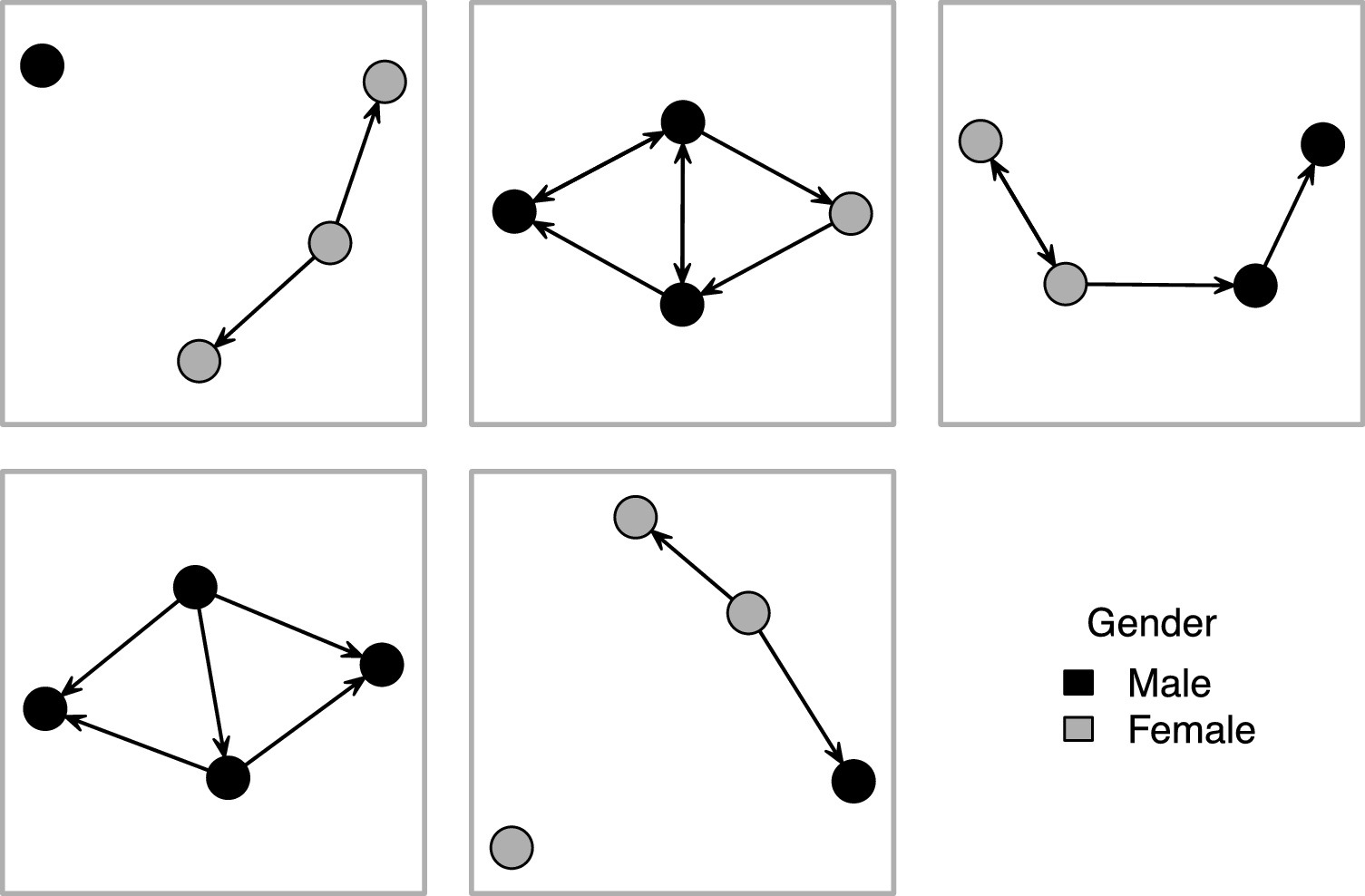
ergmito R packageDiscrete Exponential-family Models
ERGMs are a particular case of Random Markov fields.
We can use the ERGM framework for modeling vectors of binary outcomes, e.g., the consumption of \{tobacco, MJ, alcohol\}
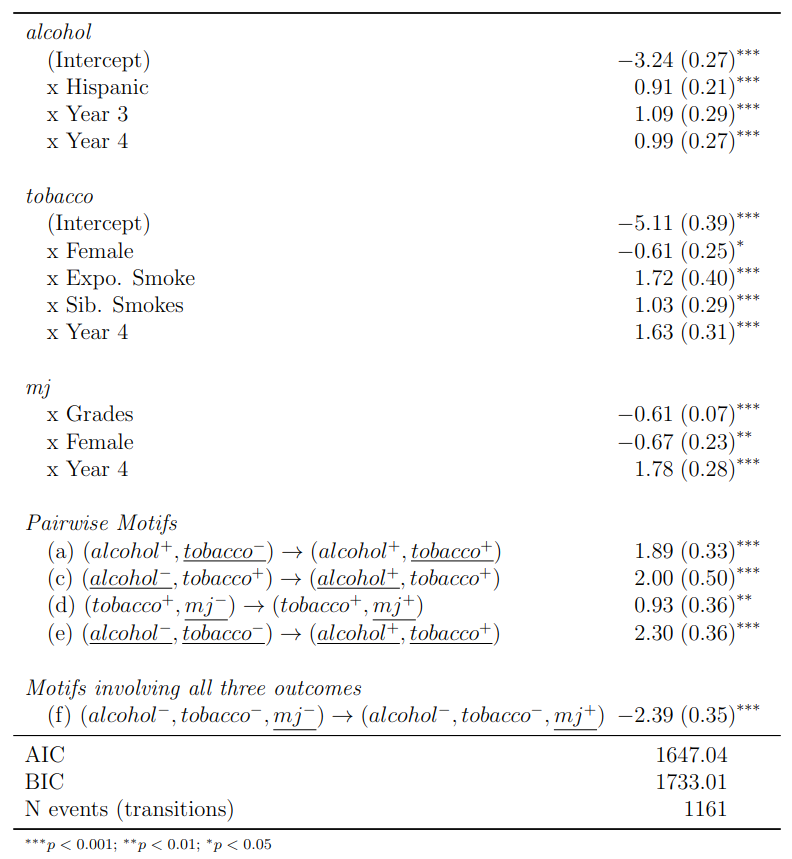
Power analysis in ERGMs
- Using conditional ERGMs (closely related to constrained), we can do power analysis for network samples (Vega Yon 2023).

Reproduced from Krivitsky, Coletti, and Hens (2023b)
Two-step estimation ERGMs
Conditioning the ERGM on an observed statistic “drops” the associated coefficient.
Hypothesis: As n increases, conditional ERGM estimates are consistent with the full model:
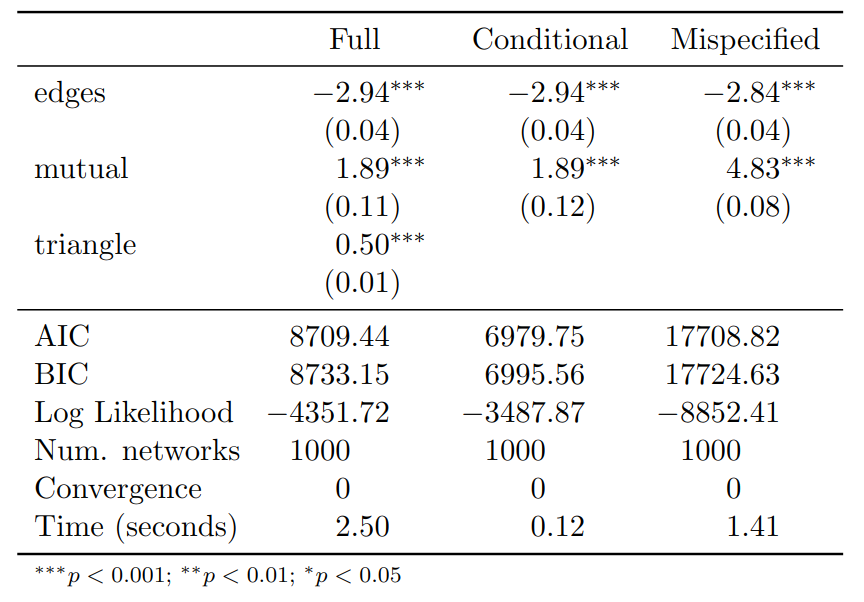
Simulation study trying to demonstrate the concept (Work in progress)
Thanks!
Bonus track: Why network scientists don’t use ERGMs?
Attempts to overcome these problems by extending the blockmodel have focused particularly on the use of (more complicated) p∗ or exponential random graph models, but while these are conceptually appealing, they quickly lose the analytic tractability of the original blockmodel as their complexity increases.
– Karrer and Newman (2011)
References
New topics in network modeling – https://ggvy.cl
